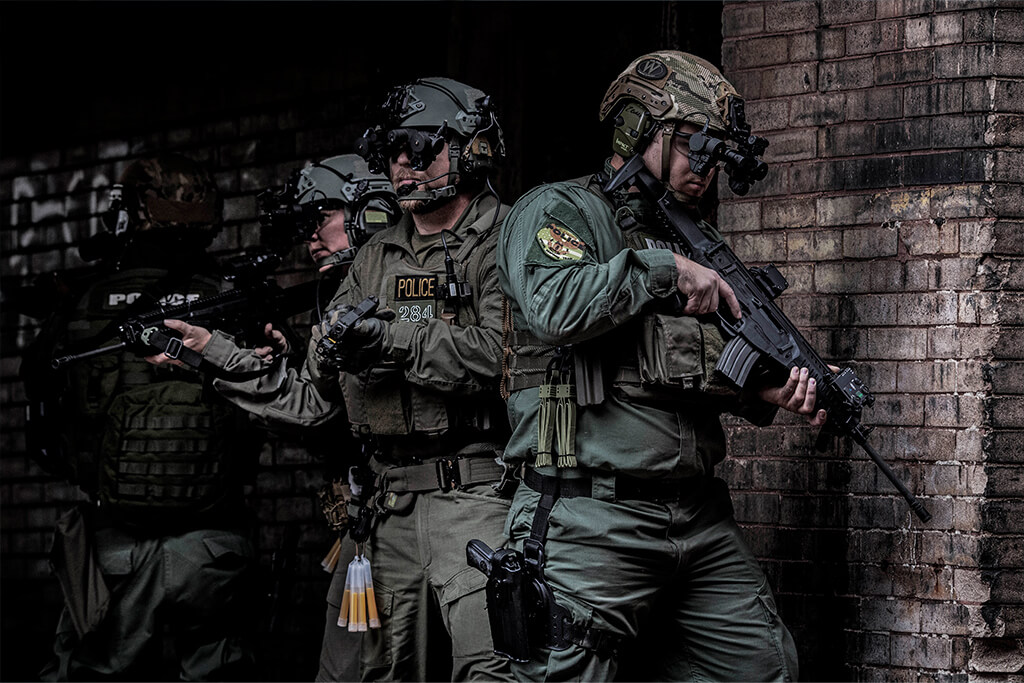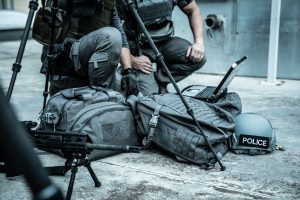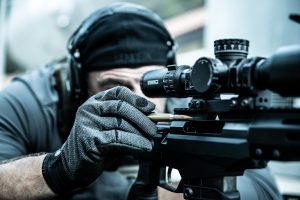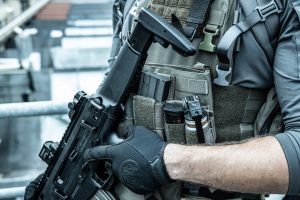
28 July 2023
SWAT TACTICAL GEAR: A COMPREHENSIVE GUIDE
Special intervention units, also called “SWAT” (Special Weapons And Tactics) teams are elite law enforcement units that have enhanced training and are equipped to handle high-risk operations that pose a significant threat to public safety or involve a high degree of complexity. These special operations may include hostage situations, armed barricaded suspects, terrorist attacks, high-risk arrests, and serving warrants in high-risk scenarios. The specific procedures and protocols followed by SWAT teams may vary between jurisdictions, but their overall goal is to protect lives, neutralize threats, and restore order in high-risk situations. The success and safety of SWAT operations heavily rely on the tactical gear they utilize, on their special training and their skills and competences. This comprehensive guide will provide an overview of the essential SWAT tactical gear BDT can provide and their main functions.
Categories of tactical gear:
- Personal Protective Equipment (PPE)
- Tactical Clothing
- Communication Equipment
- Firearms, Ammunition and Accessories
- Miscellaneous Gear
- PERSONAL PROTECTIVE EQUIPMENT (PPE):
SWAT teams are equipped with specialized personal protective equipment (PPE) to enhance their safety and effectiveness during high-risk operations: this includes 1) Tactical Helmet: a high-cut or ballistic helmet with accessory rails for attaching accessories like night vision goggles, communication devices, and flashlights 2) Ballistic Vest: bullet-resistant vest that provides protection to the operator, it may have MOLLE webbing for attaching additional equipment 3) Ballistic Plates: rigid inserts placed in plate carriers to enhance protection against rifle rounds 4) Ballistic Shield: a handheld shield made of ballistic material, used for protection during approach or entry into dangerous areas 5) Gloves: durable & cut-resistant gloves to protect the hands and provide grip in various environments 6) Knee & elbow pads: to minimize the impact from injuries during dynamic entries and crawling 7) Respirator Mask: designed to provide respiratory protection in various operational environments. These masks are typically more compact and lightweight compared to full-face respirators used in specific hazardous situations. 8) Protective Goggles/Face Shields: essential pieces of personal protective equipment (PPE) used by law enforcement officers to safeguard their eyes and face during various law enforcement activities and special operations.

- TACTICAL CLOTHING:
Some common elements about Tactical Clothing are the Ripstop fabric material to resist tearing and ripping, significantly enhancing the durability of the garment. Tactical clothing usually includes numerous pockets, both visible and hidden, strategically placed to allow for easy access to essential gear and equipment. Important factors combining breathable ergonomic design (to provide freedom of movement and minimize restrictions during operations) with quick-drying properties, water-resistant or waterproof to offer protection in wet conditions. In every department and production phase of each BDT company, the continuous synergy between Mil&LE operators with our R&D departments allows our Clothing to be engineered to provide functionality, durability, and comfort in high-stress and demanding situations. Beretta has developed two product lines (Combat Kit and Flame-resistant Kit) to match the requests of armed forces and law enforcement agencies for clothing that provides increased protection and comfort for their personnel (find out more on Berettadefense.com).
- COMMUNICATION EQUIPMENT:
Effective communication is essential for coordination and situational awareness. SWAT teams rely on various communication gear, including Tactical Headsets and Two-Way Radios to enable communication between team members, command centers, and other supporting units. Encryption features ensure secure transmissions.

- FIREARMS, AMMUNITION AND ACCESSORIES:
SWAT teams utilize a range of specialized weapons and accessories based on their mission requirements. Key aspects of the BDT weapon systems for SWAT operations, are accuracy, safety and modularity, which in firearms refers to the ability to customize and interchange various components of a firearm to suit different purposes, preferences, or special operational requirements (ex: CQB scenarios). Modular firearms have gained popularity in recent years due to their versatility and adaptability. Here are some common elements:
- Assault Rifle:. Swat operators may use Rifles in certain situations, where the threat level or the operational requirements demand the use of a select-fire firearm with enhanced accuracy, reliability, and modular capabilities. The reason why rifle would be considered primary weapon in respect of handguns (ex. Pistol) could be found in their enhanced stopping power, penetration and range accuracy; Consider an active shooter situation with barriers and obstacles or when dealing with heavily armed and dangerous suspects, police officers may need the enhanced firepower of rifles to effectively respond and neutralize the threat. In addition, the modularity allows unlimited configurations and customization to better address mission requirements. Within our strategic alliance we can provide various firearms to successfully address modern policing and SWAT operator requirements such as the ARX from Beretta or the AR platform from SAKO.
- SMG: Submachine guns excel where mobility is required; this lightweight, compact firearm is typically chambered for pistol cartridges like the 9×19 Action 5 SXF from RWS; this choice of ammunition provides a balance between controllable recoil, effective range, and magazine capacity. It is designed for close-quarters combat and offers a high rate of fire with relatively low recoil.
- Sniper Rifle and DMR configuration: The tactical sniper or police marksman is a highly trained law enforcement officer who specializes in precision shooting and providing long-range support during high-risk operations. Their primary role is to neutralize threats from a safe distance, minimize collateral damage, and provide critical intelligence to the SWAT team. BDT can propose various firearms including the Tikka T3x TAC A1, a bolt – action rifle chambered in .308 Win which offers incredible accuracy in a compact package, ideal for urban sniper missions. This weapon system can be complemented by SwissP .308 Win. rounds, an unconventional bullet designed and developed to accurately hit targets behind an angled window or wind shield without the risk of unpredictable bullet deflection. (Find more on swisspdefence.com and www.sako.global/defence-and-le). The tactical sniper and its integrated weapon system diverges from the Designated Marksman Rifle (DMR) which allows the delivery of accurate and rapid fire. Engaging moving targets, such as vehicle engines, and allowing rapid follow up shots when defeating barriers using larger caliber weapons is difficult when using traditional bolt action precise rifles. If a situation turns from a containment to an active shooter or marauding terror incident a marksman could easily find themselves operating inside buildings and more confined spaces where a semi auto or self-loading rifle is highly advantageous. This platform, like the Beretta ARX 200 in its DMR configuration, is most effective when combined with a Low Power Variable Optic such as the Steiner Dual Focal Plane reticle 1-8×24 M8Xi (visit www.steiner-defense.com/ for more)
- Shotguns: Shotguns are a versatile tool to deliver both lethal and less than lethal effect. A wide variety of ammunition can be employed in both roles. Many special units employ shotguns as breaching tools to access locked doors using special ammunition. A pump action shotgun such as the Benelli SuperNova can be used to deliver full load ammunition but can also be used for lower power rounds such as less lethal and breaching rounds. The Benelli M3 is the only dual function, pump and semi auto shotgun with removable butt stock on the market, making it ideal as both a patrol and a special purpose shotgun. Other shotguns such as the Benelli M4, beretta 1301 tactical and A300 Patrol offer simple yet effective shotgun solutions. Most shotguns offer the ability to mount optics, lights and other ancillary devices. Find more on benellidefense.it.
- Tactical Optics: Red dot sights, laser devices (both visible and IR), holographic sights, magnified scopes, and night vision optics improve accuracy and target acquisition in various lighting conditions and no light condition. It’s important at this stage to point out again when a Swat unit is deployed, and which is its primary scope: Swat units handle high-risk operations that pose a significant threat to public safety or involve a high degree of complexity. These special operations may include hostage situations, armed barricaded suspects, terrorist attacks or high-risk arrests in high-risk scenarios where accuracy, safety and target acquisition are fundamental aspects; SWAT overall goal is to protect lives, neutralize threats, and restore order. Many Special police units operate at night using darkness to their advantage. To maximize officer safety and maximize the advantage of low or no light environments passive night vision devices are essential. Binocular head or helmet mounted night vision devices working in the near IR band allow the officer to use both hands and also maintain complete situational awareness. This system requires an NVG compatible sighting system or a laser pointing device zeroed to the weapon like the Dual Beam Aiming Laser Pistol Light (DBAL-RL) from Steiner eOptics. Weapon mounted night vision devices are often more accurate and are used on precise rifles. They offer greater accuracy but can reduce situational awareness and require the weapon to pointed in the direction of observation. Thermal night vision is popular, especially in the rural environment, allowing quick and easy target discrimination even in the lowest milliux conditions. The ability to differentiate between hot and cold (as opposed to image intensified colors) makes searching large or complicated areas quick and easy. Fused devices that combine both systems offer a great tactical advantage but can place a heavy burden on sensory interpretation and can quickly increase operator fatigue. Find more on steiner-defense.com.
- Distraction devices: SWAT teams use flashbangs or stun grenades to disorient and distract subjects during dynamic entries or high-risk operations. These devices emit a bright light and loud noise to momentarily incapacitate or confuse individuals irritant substances can also be employed. Find more on com
- Less-Lethal Options: SWAT teams often carry less-lethal weapons (es hand and launcher deployed distraction devices, super sock, or drag stabilized impact munition) for non-lethal force application to maintain public safety while minimizing the risks inherent to lethal force. These weapons are designed to incapacitate or subdue individuals without causing fatal injuries.
- Breaching tools specialized for breaching doors, windows, and other barriers. These tools are designed to provide quick and efficient access while minimizing collateral damage. Many SWAT units employ explosive breaching techniques to access barricaded structures in the event of a hostage release situation. Special consideration must be given to the target, the hostages, and the officers to ensure that explosive breaching does not have unintended dangerous consequences. Armored vehicles such as Bearcat are also often used to deliver distraction and incapacitation devices and to also make entry into high-risk structures.
- MISCELLANEOUS GEAR:
- Tactical Backpack: A rugged backpack to carry additional ammunition, medical supplies, breaching equipment, or other mission-specific gear.
- Medical Kit: Individual first aid kit (IFAK) with essential medical supplies for treating injuries in the field.
- Multi-Tool: A versatile tool with pliers, blades, screwdrivers, and other functions for equipment maintenance and general use.
- Restraints: Zip ties, handcuffs, or flex cuffs for restraining subjects.
- Tactical surveillance capabilities: frequently available to special units. Common systems may include hand deployed robots and small, short loiter UAV allow for standoff monitoring and reconnaissance via secure wireless systems.

CONCLUSION
Dedicated to resolving extreme situations, the SWAT tactical gear is designed to provide protection, functionality, and enhanced capabilities to law enforcement officers during high-risk operations. The gear mentioned in this comprehensive guide represents a foundation for the equipment utilized by SWAT teams we can provide. However, specific gear selection may vary based on the unique needs of each SWAT unit and their operational requirements. Our immersive website dedicates an entire section to special intervention units. This is a subject that always pushes our engineers to rethink the norm and innovate with new ways of thinking and doing. SWAT operators must take advantage of the latest technologies to deploy the widest range of lethality and accuracy that the industry can offer, complemented by specialty ammunition developed for such critical applications.
Find more on Berettadefensetechnologies.com.